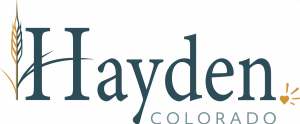20 Mar Contact tracing: Once Diagnosed what happens next?
Contact tracing: When a person is diagnosed with coronavirus, how do Routt County officials backtrack their movements?
STEAMBOAT SPRINGS, CO, March 20, 2020 — When a person tests positive for COVID-19, the Routt County public health department’s team are alerted. The investigation begins with an extremely low-tech tool: a conversation. “We interview the person who has tested positive, (and) we identify all the people they’ve been in contact with in the period when they might have been infectious,” Routt County Public Health Director Kari Ladrow says. And while self-quarantine and social distancing are among the most effective ways to prevent the spread of COVID-19, for those tools to work, officials have to make efforts to identify the people who are most likely to have come in close contact with the virus.
When a patient does test positive for the disease, it triggers a public health response known as “contact tracing,” where Public Health backtrack the patient’s movement over the previous two weeks in search of anyone else who might have contracted the disease, even if they’re not showing symptoms. Contact tracing is a critical tool allowing public health officials to connect with those who may be infected and encourage the appropriate steps. Once the virus begins to spread more rapidly, however, that becomes a far more difficult exercise.
“Routt County Public Health does this every day for other diseases as well,” Ladrow says. As part of the process, it is crucial for Public Health to figure out how the patient is exposed to the virus in the first place.
Tracing the spread of the virus.
For COVID-19 specifically, the focus is on the patient’s family and coworkers. That’s because the 2019 coronavirus spreads mainly through close and prolonged contact. Although the home and the workplace are the investigators’ highest concerns, any situation with close contact could lead to viral spread – for instance, dinner parties or dates. If Routt County Public Health staff finds a patient has also been in those situations, they may expand the investigation. Once the investigators identify possible contacts, they reach out to those people and ask them to self- quarantine for 14 days. That means staying at home and distancing themselves from other family members. Close contacts are advised that if any of them become ill, they should notify their primary healthcare provider and notify them of their exposure risk. If any of the first patient’s contacts become ill or tests positive for COVID-19, that could trigger a second layer of contact tracing, backtracking the second patient’s movements.
But initially, “the focus is on making sure that the first level of contacts are all staying home and being monitored,” Ladrow says. “If someone develops symptoms, that triggers wider” investigations. This is what Public Health professionals do across the country every day all of the time regardless of whether it is a COVID-19 situation or another communicable disease. Public Health is communicable disease surveillance and prevention work focused around the social determinants of health.”
